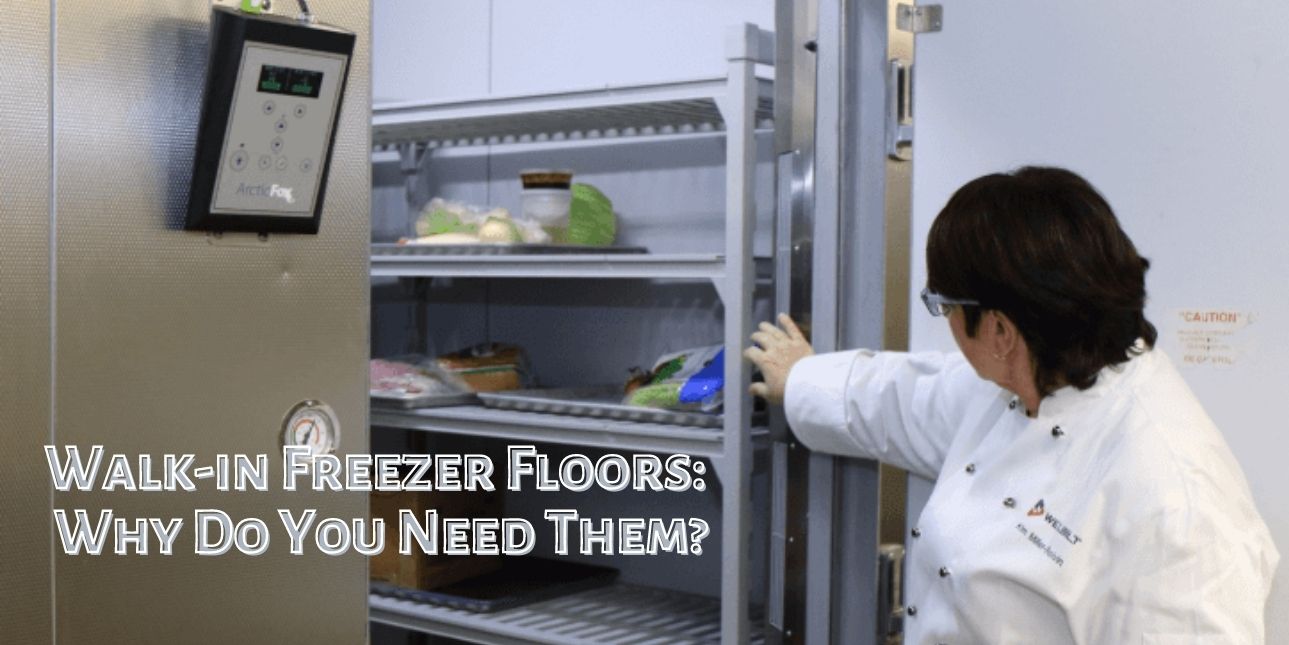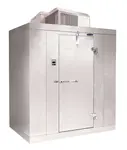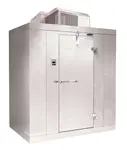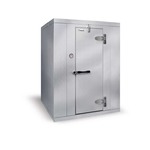
Successful commercial kitchens and foodservice establishments need high-quality walk-in freezers for storing essential food products. With walk-in freezers, you can store raw meat, veggies, fruits, and ingredients for months. Walk-in freezer units are essential for restaurants, food joints, and institutional kitchens. Walk-in freezer floors are an integral part of freezer units. You need walk-in freezer floors that provide ample storage, good insulation, slip resistance, and other features.
In this article, we discuss what to look for in walk-in freezer floors, walk-in freezer floor types, how to build a walk-in freezer floor, and how to clean a walk-in freezer’s floor.
The Importance of Walk-in Freezer Floors
Walk-in freezer floors ensure insulation and make walk-in units more energy efficient. High-quality walk-in freezer floors prevent bacterial growth and mold formation. Additionally, walk-in floors are designed following local health and safety standards. They are also designed for impending floor traffic, frequent cart usage, and support heavy loads.
What to Look for in Walk-in Freezer Floors?
You need to look for various features before choosing a walk-in freezer floor. Here we list some important features:
- National Floor Safety Institute Rating: Make sure to go through the NFSI data regarding the slip rates of various walk-in floors. Choose the safest walk-in floor for your freezer to prevent accidents.
- Waterproofing: Walk-in freezer floors are designed to prevent bacterial growth and mold growth. Waterproof walk-in floors are also easier to clean. Choose a walk-in freezer floor that is water and chemical-resistant.
- Weight Limit: Walk-in freezer floors are designed for heavy goods and objects, but walk-in freezer floors' load factor or capacity varies model by model. You can opt for a walk-in freezer floor that supports heavy loads.
- Odor and Color Resistant: Choose walk-in freezer floors that are odorless and colorless. As per state regulations, walk-in freezer floors need to be made from non-toxic materials. Non-toxic materials are ideal for food storage.
- Size: The size and capacity of your walk-in freezer floor will depend on your storage requirements and the size of your walk-in freezer unit. Some walk-in units come with walk-in floors, but you can always renew or redo your existing walk-in floor depending on your walk-in freezer’s capacity. Walk-in floors need to be redone after years of heavy usage.
Walk-in Freezer Floor Types
Walk-in freezer floors are essential for your food storage requirements. Purchase a floor that is waterproof, slip-resistant, odorless, and can withstand heavy loads. There are various types of walk-in freezer floors to choose from. Here, we list the different types of walk-in freezer floors available in the market:
- Reinforced Walk-in Floors: Reinforced walk-in freezer floors are designed to withstand 5000 to 6000 pounds of weight per square foot. Reinforced walk-in floors are stabilized with metal grids that are placed in foam insulation. The underlays of reinforced freezer floors are made from plywood, making them steady and sturdy. These walk-in floors are ideal for loaded carts and frequent usage by employees.
- Aluminum Panel Walk-in Floors: Aluminum panel floors are the most popular walk-in floors in the market. Most aluminum panel walk-in floors can carry loads up to 500 to 600 pounds per square foot. Aluminum panel walk-in floors are economical but are not designed for heavy loads or frequent foot traffic.
- Plywood Underlays: Plywood-based walk-in floors are more resilient than aluminum panel walk-in floors. Plywood walk-in floors can support up to 1000 to 1100 pounds of weight per square foot. You can use lightweight carts on these walk-in floors. Additionally, these floors are designed for frequent foot traffic. Wooden walk-in floors are best suited for medium to heavy usage, as they can distribute the weight evenly across the wooden floor. Plywood walk-in floors are costlier than aluminum panel walk-in floors but are more efficient.
Additional Walk-in Freezer Floor Features:
- A. Diamond Tread Plates: Diamond tread plates are designed to prevent accidental slips. You can upgrade your existing walk-in floor with diamond tread plates for better efficiency and safety.
- B. Ramps: You can add elevation to your existing walk-in floor with ramps. With ramps, you can quickly move carts and loads effortlessly.
How to Build a Walk-in Freezer Floor
You can build walk-in freezer floors by analyzing the location and surface. The construction of the floor will depend on the capacity of the walk-in freezer unit, optimum load, space availability, and the quality of the surface beneath the walk-in freezer floor. The walk-in freezer floor needs to be completely insulated. You can place pipes underneath the walk-in freezer floor to allow hot air to flow below the surface, as cold air can warp the materials beneath the freezer floor. Walk-in freezer floors constructed over soil can heave the soil as moisture sinks to the ground, eventually damaging the freezer floor. You can use gravel for drainage. Always evaluate the ground to check for structural integrity and provide necessary passage for air circulation and drainage. Ensure proper insulation for your walk-in freezer floor and choose an ideal walk-in freezer floor type depending on your business needs.
How to Clean a Walk-in Freezer Floor
Walk-in freezer floors are prone to bacterial formation, dirt accumulation, and stains. It would help if you cleaned walk-in freezer floors frequently to prevent accidents and keep them hygienic. Here are some tips for cleaning a walk-in freezer floor:
- Water and Isopropyl Alcohol: Water can freeze quickly on a freezer floor, creating a dangerous situation. For efficient cleaning, you can dilute 70 percent isopropyl alcohol in 30 percent water and add the mixture to a gallon of hot water. You can also add a half-cup of soap or cleaning solution to the mix.
- Freezer Cleaner: Use heavy-duty walk-in freezer floor cleaner chemicals for cleaning stains and your floor. They are ideal for cleaning operational freezers. With freezer cleaners, you can eliminate freezer shutdowns which can be costly for foodservice businesses. Freezer cleaners are suitable for cleaning dirt, food soils, and tread marks of tires without having to defrost the freezer.
- Mop: You can mop spilled liquids immediately, as spilled liquids can lead to patches of ice formation that can be dangerous for employees.
Walk-in freezer and walk-in freezer floors are essential for foodservice businesses. Walk-in freezers are designed for bulk storage; you can store hundreds of pounds of fresh meat, raw and cooked veggies, and various ingredients in walk-in freezers. High-quality walk-in freezer floors are designed to withstand heavy loads, frequent food traffic, and cart movements. For additional safety, you need to make your walk-in freezer floor slip-resistant. Analyze your requirements and research ways to make your walk-in freezer floor sturdy and efficient. High-quality walk-in freezer floors can withstand years of heavy usage. Refer to the following guide, ‘How to build a walk-in freezer’, for more information on setting up your walk-in freezer.










